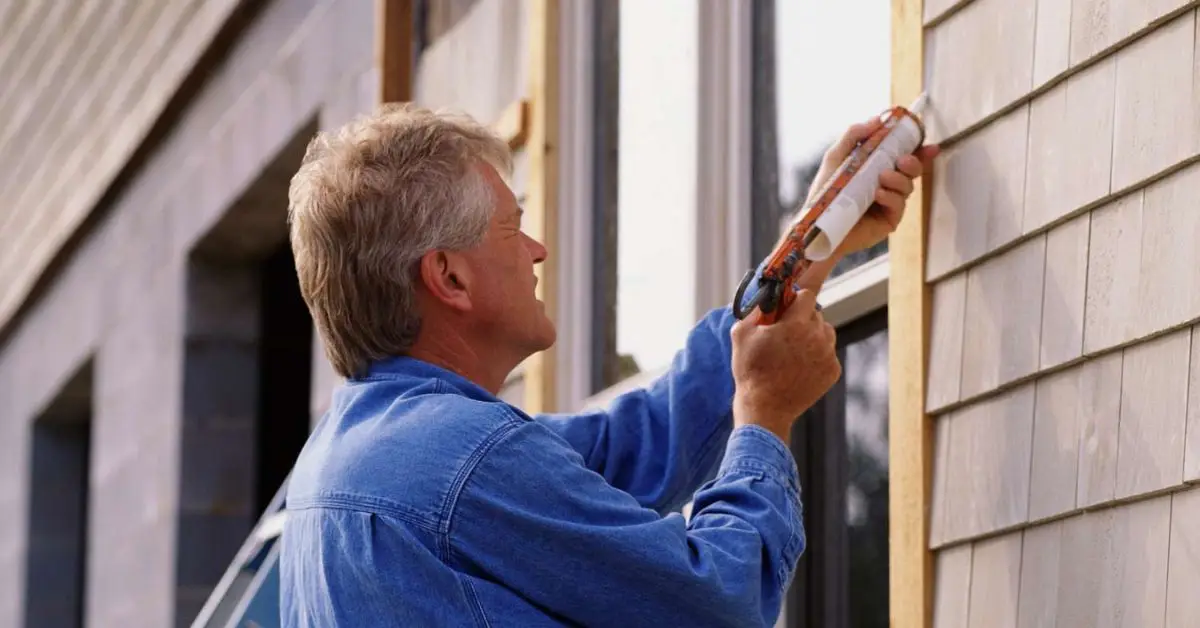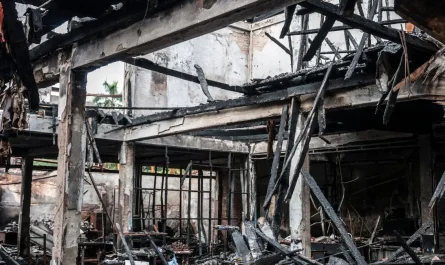Stay Warm and Safe: 12 Essential Winter Home Repairs You Can Handle Yourself
Your house might suffer greatly throughout the winter. Believe me, I have witnessed frozen faucets, leaking roofs, and busted pipes. These issues can quickly deplete your finances in addition to ruining your comfort.
The problem is that you don’t have to wait for a catastrophe or constantly hire pricey experts. Many of these problems can be avoided before they arise with a little do-it-yourself winter maintenance.
I’m going to give you 12 simple activities that you can complete on your own in this post. Simple measures to secure your house and save a lot of money—no costly equipment or specialized knowledge.
You’ll know precisely what to inspect, repair, and get ready by the end so that winter won’t surprise you.
Are you prepared to take charge and protect your house this season? Let’s begin.
Task 1 Clean and Inspect Gutters and Downspouts
If I’ve learned anything over the years, it’s that clogged gutters are a silent wintertime enemy. Water cannot flow freely when your gutters are clogged with debris and leaves. When that water freezes, ice dams are formed.Because these ice dams prevent the melting snow from draining, water backs up and seeps into your house. Believe me, those leaks have the potential to do significant and costly harm to your roof and walls.
Here’s how to safely manage this on your own:
-
Use a
sturdy ladder
to reach the gutters, and always wear
protective gloves
to keep your hands safe. - Start by scooping out any leaves, twigs, or debris with your hands or a small gutter scoop.
-
After clearing, flush the gutters with a hose to make sure the
downspouts aren t blocked
. -
While you re up there, check for any
loose, cracked, or damaged sections
tighten or repair them if you can.
Next time, think about investing in ingutter guards to make things easier. They act as a buffer for your gutters, keeping leaves and other waste from building up, saving you time and trouble.
One of the best defenses against water damage and costly roof repairs that no one likes to deal with in the winter is to keep your gutters clean.
Task 2 Seal Exterior Cracks and Gaps
During the winter, have you ever observed chilly drafts creeping in around your doors or windows? Even while those tiny holes and gaps appear innocuous, they are stealing your hard-earned cash. Your heating system must work harder when warm air exits and cold air enters, which results in higher bills.
Here’s how to put an end to this:
-
Take a walk around your home and
look carefully for gaps or cracks
near windows, doors, and even the foundation. Run your hand along the edges you ll often feel cold air where there s a leak. If you re sealing cracks and gaps around your home, it s also a great opportunity to check for and seal any openings that might let bats or other pests inside here are someeasy fixes to stop bats from invading your home
that DIYers swear by.
-
For small cracks and gaps, use
caulking
it s like putting a seal on your home. Just squeeze it into the cracks and smooth it out. -
Around doors and windows,
apply weatherstripping
. It s easy to install yourself and acts as a barrier to block cold drafts.
These are easy improvements that have a big impact. You’ll notice that your heating expenditures begin to decrease and your house feels warmer.
Leaks can be sealed to improve insulation, reduce energy expenses, and create a more comfortable living environment—especially during colder months.
Task 3 Inspect and Repair Roof Shingles or Tiles
It’s wise to inspect your roof before the winter months arrive because it takes a lot of damage. I usually advise folks to look for missing or broken tiles and shingles since even a tiny crack or loose fragment can allow water to seep in. When the temperature drops, nobody wants that water to infiltrate your house and cause leaks and heat loss.
Here’s how to identify and address issues:
-
Walk around your house and look up focus on
shingles that are cracked, curling, or missing
. If you re comfortable, carefully climb a ladder to inspect more closely. -
For minor damage, you can use roofing cement to
seal small cracks or reattach loose shingles
yourself. -
If you see extensive damage, multiple missing shingles, or signs of sagging, it s time to
call a professional roofer
. Some repairs need expert tools and know-how to keep your roof safe.
Check out The Spruce’s guide on winter home renovations for more thorough advice on roof inspections.
By taking care of your roof now, you can prevent heat loss and water leaks during winter storms.
By preventing leaks and improving heat retention, a sturdy roof will keep your house warm and dry throughout inclement weather.
Task 4 Protect Outdoor Faucets and Sprinkler Systems
Sprinkler systems and outdoor faucets are among the first to freeze in the winter, and frozen pipes may be a nightmare. Because a burst pipe can result in significant water damage and costly plumbing repairs, I always advise getting these ready in advance.
Here’s how to keep them safe:
-
First,
drain water from outdoor faucets and sprinkler lines
to remove any standing water that can freeze and expand. -
Then,
shut off your irrigation system
from the main valve to stop water flow before the freeze hits. -
Finally, cover exposed faucets with
insulated faucet covers
they re cheap and easy to install but make a big difference in preventing freezes.
By doing these things now, you can avoid a lot of problems later.
By protecting sprinkler systems and faucets, you may prevent frozen pipes and the associated expensive plumbing issues.
Task 5 Replace Furnace Filters and Test Heating System
The secret to remaining warm during the winter is maintaining the condition of your furnace. Regularly changing the furnace filters is one easy thing you can do. Reduced airflow from dirty filters causes your system to work harder and raises your energy costs.
What you should know is as follows:
- Check your furnace filter every 1 3 months and replace it if it looks dirty or clogged.
-
If your furnace is making strange noises, smelling odd, or not heating well, those are signs it might need
professional servicing
. - Besides filter changes, test your thermostat and listen for unusual sounds when the system turns on.
By performing these easy checks, you and your family may breathe better indoor air every day and your furnace will operate more effectively.
Check out our HouseLogic post on winter home repair tasks for a comprehensive guide to furnace maintenance.
A healthier home environment and improved heating performance can be achieved by inspecting and replacing your heating system’s filters.
Task 6 Insulate Exposed Pipes
One of the most prevalent wintertime issues is frozen pipes, which frequently originate from pipes exposed to cold air in crawl spaces, attics, or basements.
Here’s how to keep them safe:
- Identify pipes that run along outside walls or unheated areas these are the most vulnerable.
- Use pipe insulation foam sleeves or wrap them with heat tape for extra protection.
-
Make sure to cover both hot and cold water pipes to
prevent freezing and bursting
.
You can avoid the trouble and cost of repairing burst pipes and water damage by taking this easy step.
Insulating pipes prevents expensive water damage to your house and helps you avoid plumbing issues.
Task 7 Test Smoke and Carbon Monoxide Detectors
Spending more time indoors during the winter, frequently with heaters running, raises the possibility of smoke or carbon monoxide (CO) buildup. For this reason, having functional detectors is crucial.
This is what you ought to do:
-
Test your
smoke and CO detectors
once a month by pressing the test button. - Replace batteries at least once a year, or immediately if you hear a low-battery beep.
- Make sure detectors are placed on every floor, especially near sleeping areas and close to the furnace or fireplace.
These detectors might practically save your life because carbon monoxide is odorless and lethal.
The significance of this sectionBy shielding your family from heating-related risks like fires and carbon monoxide poisoning, functional detectors provide you peace of mind.
Task 8 Clean and Inspect Chimney and Fireplace
You must maintain a safe and effective fireplace if you use one. Creosote accumulation inside your chimney over time has the potential to ignite and result in hazardous chimney fires.
To remain on top of it, follow these steps:
- Have your chimney inspected and cleaned regularly, especially before heavy use. If you want to try a basic cleanup yourself, start by removing any loose soot or debris.
-
Check the
chimney cap and flue
to make sure they re intact and clear of blockages like bird nests or leaves. - Follow safe fireplace practices never leave fires unattended and use a proper screen to catch sparks.
A clean fireplace and chimney keep your house cozy and your family safe.
Maintaining a clean and inspected chimney reduces the risk of fire and guarantees that your heating system is safe throughout the winter.
Task 9 Install Draft Stoppers on Doors and Windows
Drafts that creep in around your windows and doors can significantly affect how chilly your house feels and how much your heating costs increase. Draft stoppers are among the simplest solutions I suggest.
What you should know is as follows:
-
There are different types:
fabric tube draft stoppers
, adhesive foam strips, and door sweeps. - Installation is usually simple just place draft stoppers along the bottom of doors or stick foam strips around window frames.
- These block cold air from sneaking in and keep your warm air inside, making your rooms more comfortable quickly.
Applying draft stoppers can have a significant impact, particularly when working with older windows or doors.
A easy and inexpensive solution that increases comfort and lowers heating expenses is a draft blocker.
Task 10 Program or Install a Programmable Thermostat
Using a programmable thermostat is one thing that has really altered the way I control my heating. By controlling when your heater operates, you may avoid wasting energy heating a house that isn’t occupied or overheating at night.
The scoop is as follows:
- You can program it to lower the temperature when you re away or asleep and raise it before you return or wake up.
- Many models are easy to install yourself just follow the step-by-step instructions included.
-
This small upgrade can lead to significant
energy savings
and make your home feel just right without constantly adjusting the thermostat.
Check out this post on winter home projects from Real Simple for a useful guide on programmable thermostats and energy-saving techniques.
Without requiring additional work, a programmable thermostat keeps your house comfortable, automates your heating, and reduces your expenditures.
Task 11 Reverse Ceiling Fans to Distribute Warm Air
In the winter, your ceiling fan can assist keep your rooms warmer, even if you’re not aware of it. The fan forces warm air stored close to the ceiling down into the living area by reversing the fan blades to spin clockwise at a low speed.
This is how you go about it:
- Look for a small switch on the fan s motor housing to change the blade direction.
- Run the fan on low speed once reversed too fast and it could create a cooling breeze instead.
- Feel the difference as warm air circulates evenly, making your room more comfortable.
This easy tip keeps you warm while using less energy from your heating system.
By reversing your ceiling fan, you can increase warmth and lower heating expenses by improving heat circulation.
Task 12 Maintain Humidifiers for Indoor Comfort
Your skin, throat, and even your sinuses may suffer from the dry winter air. By adding moisture back into your house, a humidifier improves the comfort and health of the air.
This is what you must do:
-
Regularly
clean your humidifier
according to the manufacturer s instructions to prevent mold and bacteria buildup. -
Keep the water tank
refilled with clean water
to maintain optimal humidity levels. - Monitor indoor humidity with a hygrometer; aim for 30-50% to avoid excess dampness.
Maintaining your humidifier means you breathe easier and your skin stays hydrated all winter long.
Proper humidifier care keeps indoor aircomfortable and healthy, protecting your skin and respiratory health during dry months.
Bonus Essential Tools and Safety Tips for Winter DIY Repairs
Before you dive into these winter maintenance tasks, having the righttools and safety gearmakes all the difference. I always keep a checklist to stay prepared and safe.
Here s what you should have on hand:
-
Basic tools
like a ladder, gloves, screwdriver, caulking gun, and flashlight. -
Safety gear
such as goggles, non-slip boots, and a sturdy mask if you re dealing with dust or chemicals. -
Winter-specific items
like insulated gloves and knee pads to stay warm and comfortable while working outside. While you re making your home safer from winter damage, why not boost your overall home security too? Check out this guide onDIY home security systems
that are easy to install and give you peace of mind year-round.
And don t forget these safety tips:
- Always check weather conditions before starting outdoor work.
- Use a sturdy ladder on even ground and have someone spot you if possible.
- Take breaks to warm up and avoid rushing cold hands and fingers can lose grip easily.
Being prepared with the right tools and safety gear helps youdo repairs safely and effectively, reducing the risk of accidents.
Final Encouragement & Next Steps
You ve got a solid plan now to tackle those winter DIY repairs yourself and trust me, it feels great to save money while protecting your home. Doing these tasks regularly can prevent costly damage and keep your house cozy all season long.
Here s what I suggest:
- Schedule these maintenance tasks on your calendar each year it s a small effort that pays off big.
- Share your own tips or ask questions if you get stuck; I m here to help you along the way.
-
Remember, every step you take makes your home safer and more comfortable. Once winter passes, you ll want your yard looking great too avoid common pitfalls with this helpful post on
DIY lawn care mistakes
so you can keep your outdoor space healthy and beautiful.
I d love to hear from you!
Have you tried any of these winter DIY tasks before? Or maybe you have your own tips to share? Drop a comment below let s help each other keep our homes safe and warm this winter!
For more helpful DIY home maintenance tips, visitBuild Like New!
Disclaimer:This article is for informational purposes only. Always follow safety guidelines and consult a professional for major repairs.
Table of Contents
-
Task 1 Clean and Inspect Gutters and Downspouts
-
Task 2 Seal Exterior Cracks and Gaps
-
Task 3 Inspect and Repair Roof Shingles or Tiles
-
Task 4 Protect Outdoor Faucets and Sprinkler Systems
-
Task 5 Replace Furnace Filters and Test Heating System
-
Task 6 Insulate Exposed Pipes
-
Task 7 Test Smoke and Carbon Monoxide Detectors
-
Task 8 Clean and Inspect Chimney and Fireplace
-
Task 9 Install Draft Stoppers on Doors and Windows
-
Task 10 Program or Install a Programmable Thermostat
-
Task 11 Reverse Ceiling Fans to Distribute Warm Air
-
Task 12 Maintain Humidifiers for Indoor Comfort
-
Bonus Essential Tools and Safety Tips for Winter DIY Repairs
-
Final Encouragement & Next Steps




